Zhangqiang Ming
PL-Net: Progressive Learning Network for Medical Image Segmentation
Oct 27, 2021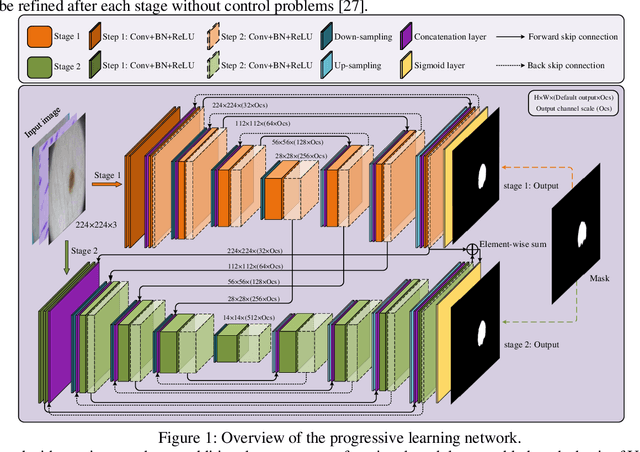
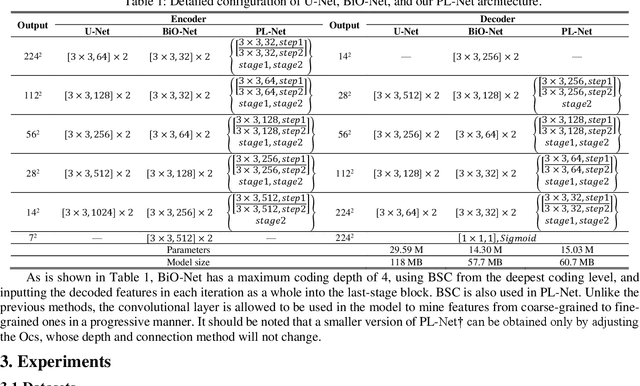
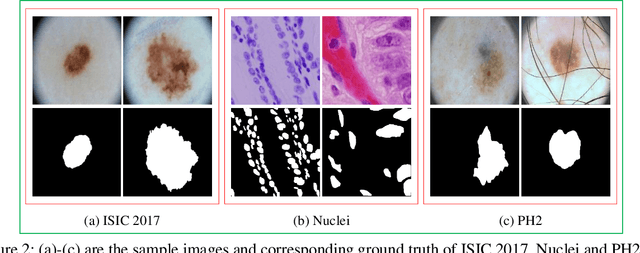
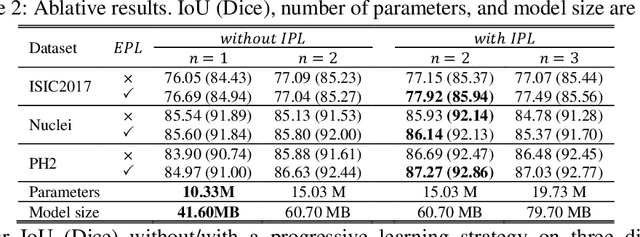
Abstract:In recent years, segmentation methods based on deep convolutional neural networks (CNNs) have made state-of-the-art achievements for many medical analysis tasks. However, most of these approaches improve performance by optimizing the structure or adding new functional modules of the U-Net, which ignoring the complementation and fusion of the coarse-grained and fine-grained semantic information. To solve the above problems, we propose a medical image segmentation framework called progressive learning network (PL-Net), which includes internal progressive learning (IPL) and external progressive learning (EPL). PL-Net has the following advantages: (1) IPL divides feature extraction into two "steps", which can mix different size receptive fields and capture semantic information from coarse to fine granularity without introducing additional parameters; (2) EPL divides the training process into two "stages" to optimize parameters, and realizes the fusion of coarse-grained information in the previous stage and fine-grained information in the latter stage. We evaluate our method in different medical image analysis tasks, and the results show that the segmentation performance of PL-Net is better than the state-of-the-art methods of U-Net and its variants.
Deep learning-based person re-identification methods: A survey and outlook of recent works
Oct 16, 2021



Abstract:In recent years, with the increasing demand for public safety and the rapid development of intelligent surveillance networks, person re-identification (Re-ID) has become one of the hot research topics in the field of computer vision. The main research goal of person Re-ID is to retrieve persons with the same identity from different cameras. However, traditional person Re-ID methods require manual marking of person targets, which consumes a lot of labor cost. With the widespread application of deep neural networks in the field of computer vision, a large number of deep learning-based person Re-ID methods have emerged. Therefore, this paper is to facilitate researchers to better understand the latest research results and the future trends in the field. Firstly, we summarize the main study of several recently published person re-identification surveys and try to fill the gaps between them. Secondly, We propose a multi-dimensional taxonomy to categorize the most current deep learning-based person Re-ID methods according to different characteristics, including methods for deep metric learning, local feature learning, generate adversarial networks, sequence feature learning and graph convolutional networks. Furthermore, we subdivide the above five categories according to their technique types, discussing and comparing the experimental performance of part subcategories. Finally, we conclude this paper and discuss future research directions for person Re-ID.
Global-Local Dynamic Feature Alignment Network for Person Re-Identification
Sep 13, 2021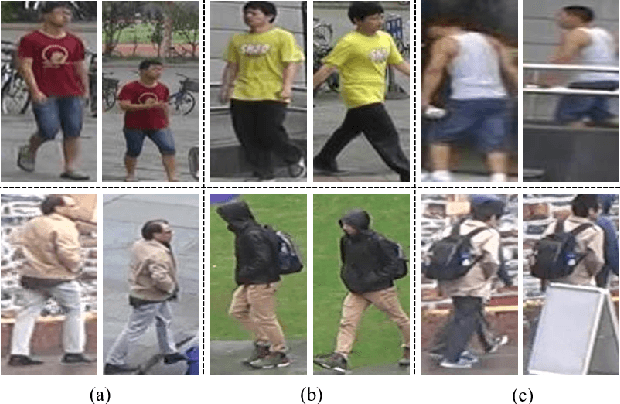


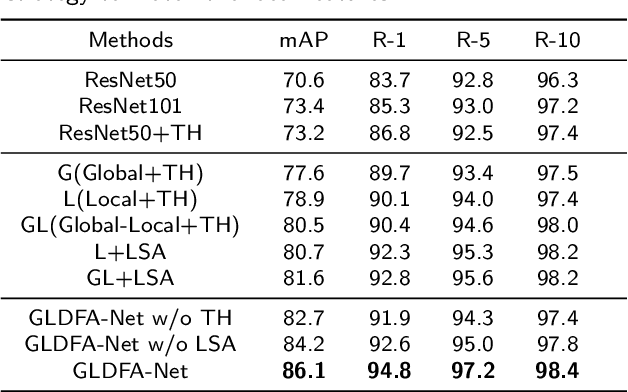
Abstract:The misalignment of human images caused by pedestrian detection bounding box errors or partial occlusions is one of the main challenges in person Re-Identification (Re-ID) tasks. Previous local-based methods mainly focus on learning local features in predefined semantic regions of pedestrians, usually use local hard alignment methods or introduce auxiliary information such as key human pose points to match local features. These methods are often not applicable when large scene differences are encountered. Targeting to solve these problems, we propose a simple and efficient Local Sliding Alignment (LSA) strategy to dynamically align the local features of two images by setting a sliding window on the local stripes of the pedestrian. LSA can effectively suppress spatial misalignment and does not need to introduce extra supervision information. Then, we design a Global-Local Dynamic Feature Alignment Network (GLDFA-Net) framework, which contains both global and local branches. We introduce LSA into the local branch of GLDFA-Net to guide the computation of distance metrics, which can further improve the accuracy of the testing phase. Evaluation experiments on several mainstream evaluation datasets including Market-1501, DukeMTMC-reID, and CUHK03 show that our method has competitive accuracy over the several state-of-the-art person Re-ID methods. Additionally, it achieves 86.1% mAP and 94.8% Rank-1 accuracy on Market1501.
 Add to Chrome
Add to Chrome Add to Firefox
Add to Firefox Add to Edge
Add to Edge